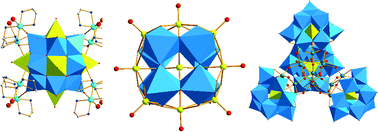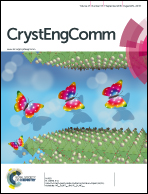Recent progress in polyoxoniobates decorated and stabilized via transition metal cations or clusters
Abstract
Transition metal (TM) cations and clusters have been widely used to functionalize polyoxometalates (POMs) of tungsten, molybdenum and vanadium due to their acidic nature, which made them compatible with addendum TM cations. Together with the good understanding of their solution behavior, a number of TM-based POMs have been achieved, which exhibited potential applications in many fields. Comparably, fewer polyoxoniobates (PONs) were obtained due to the poor understanding of their solution behavior, and they could only exist in strong alkaline aqueous solutions, where most of the TM cations precipitate because of the formation of hydroxide or oxide. Recently, TM cations were introduced into PONs by protection of chelate organic ligands or via selection of alkaline-soluble TM cations. Further, lacunary POMs, composed of early TM cations, were used as polydentate ligands to isolate PONs, and they make the PON clusters stably exist in acidic solutions. The acidic nature of tungstoniobate (W–Nb) clusters allowed acid-soluble TM cations to directly functionalize the Nb–W clusters. This highlight focuses on discussing the roles of TM centers in constructing PON-based materials, including TM-cluster-containing PONs, TM–organic group-decorating PONs and niobate clusters isolated by lacunary POMs. This systematic compilation of TM-PON studies will reveal a promising direction for further functionalization of PONs, and it will disclose a richer and more diverse set of structures in PON chemistry.


 Please wait while we load your content...
Please wait while we load your content...